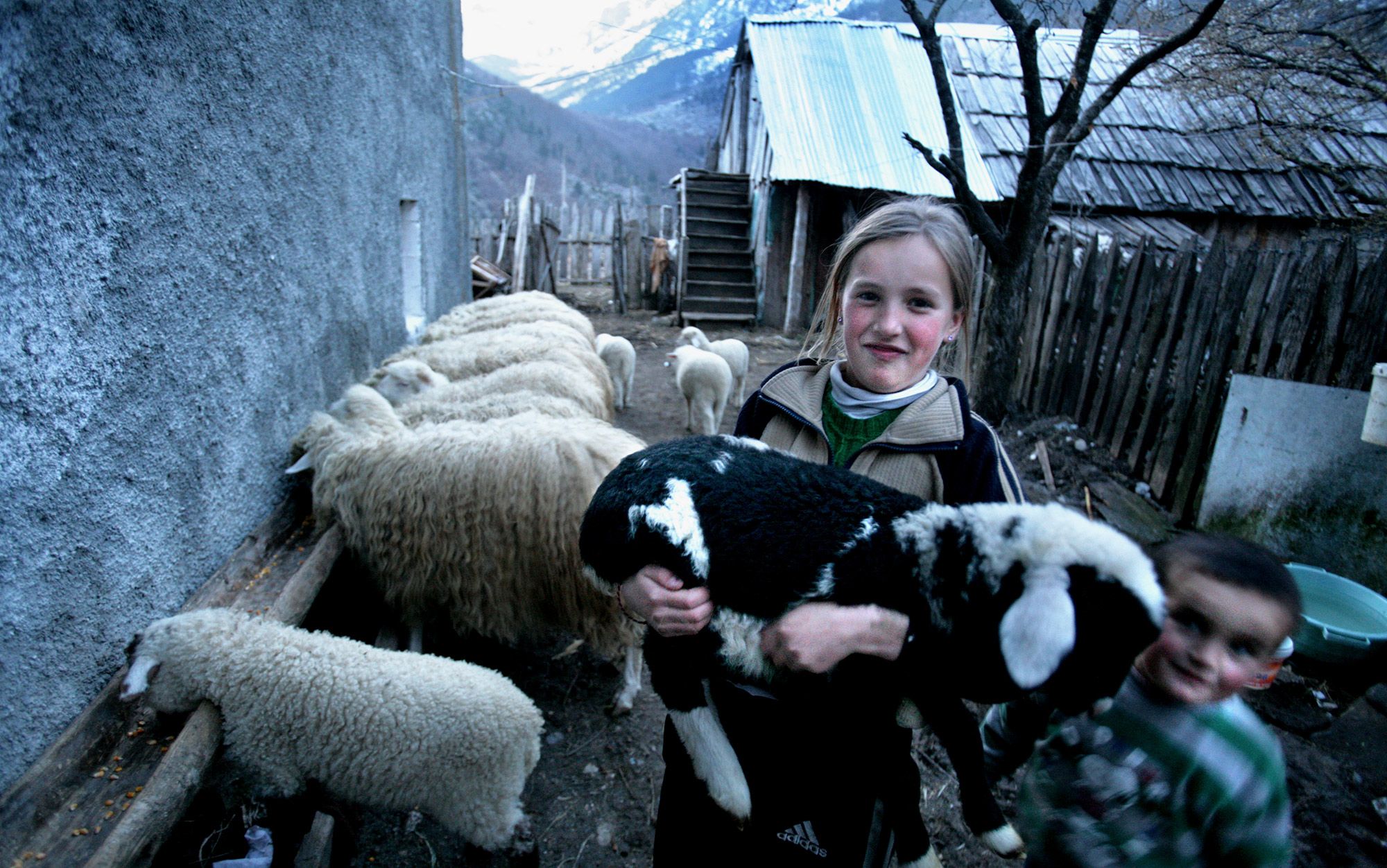Look up from your screen
Children learn best when their bodies are engaged in the living world. We must resist the ideology of screen-based learning

A rooster crows and awakens my family at the farm where we are staying for a long weekend. The air is crisp, and stars twinkle in the sky as the Sun rises over the hill. We walk to the barn, where horses, cows, chickens, pigs, dogs and cats vie for our attention. We wash and replenish water bowls, and carry hay to the cows and horses. The kids collect eggs for breakfast.
The wind carries the smells of winter turning to spring. The mud wraps around our boots as we step in puddles. When we enter a stall, the pigs bump into us; when we look at the sheep, they cower together in a corner. We are learning about the urban watershed, where eggs and beef come from, and how barns were built in the 19th century with wood cauls rather than metal nails. We experience the smells of the barn, the texture of the ladder, the feel of the shovels, the vibration when the pigs grunt, the taste of fresh eggs, and the camaraderie with the farmers.
As a parent, it is obvious that children learn more when they engage their entire body in a meaningful experience than when they sit at a computer. If you doubt this, just observe children watching an activity on a screen and then doing the same activity for themselves. They are much more engaged riding a horse than watching a video about it, playing a sport with their whole bodies rather than a simulated version of it in an online game.
Today, however, many powerful people are pushing for children to spend more time in front of computer screens, not less. Philanthropists such as Bill Gates and Mark Zuckerberg have contributed millions of dollars to ‘personal learning’, a term that describes children working by themselves on computers, and Laurene Powell Jobs has bankrolled the XQ Super School project to use technology to ‘transcend the confines of traditional teaching methodologies’. Policymakers such as the US Secretary of Education Betsy DeVos call personalised learning ‘one of the most promising developments in K-12 education’, and Rhode Island has announced a statewide personalised learning push for all public school students. Think tanks such as the Brookings Institution recommend that Latin-American countries build ‘massive e-learning hubs that reach millions’. School administrators tout the advantages of giving all students, including those at kindergarten, personal computers.
Many adults appreciate the power of computers and the internet, and think that children should have access to them as soon as possible. Yet screen learning displaces other, more tactile ways to discover the world. Human beings learn with their eyes, yes, but also their ears, nose, mouth, skin, heart, hands, feet. The more time kids spend on computers, the less time they have to go on field trips, build model airplanes, have recess, hold a book in their hands, or talk with teachers and friends. In the 21st century, schools should not get with the times, as it were, and place children on computers for even more of their days. Instead, schools should provide children with rich experiences that engage their entire bodies.
To better understand why so many people embrace screen learning, we can turn to a classic of 20th-century French philosophy: Maurice Merleau-Ponty’s Phenomenology of Perception (1945).
According to Merleau-Ponty, European philosophy has long prioritised ‘seeing’ over ‘doing’ as a path to understanding. Plato, René Descartes, John Locke, David Hume, Immanuel Kant: each, in different ways, posits a gap between the mind and the world, the subject and the object, the thinking self and physical things. Philosophers take for granted that the mind sees things from a distance. When Descartes announced ‘I think therefore I am’, he was positing a fundamental gulf between the thinking self and the physical body. Despite the novelty of digital media, Merleau-Ponty would contend that Western thought has long assumed that the mind, not the body, is the site of thinking and learning.
According to Merleau-Ponty, however, ‘consciousness is originally not an “I think that”, but rather an “I can”’. In other words, human thinking emerges out of lived experience, and what we can do with our bodies profoundly shapes what philosophers think or scientists discover. ‘The entire universe of science is constructed upon the lived world,’ he wrote. Phenomenology of Perception aimed to help readers better appreciate the connection between the lived world and consciousness.
Philosophers are in the habit of saying that we ‘have’ a body. But as Merleau-Ponty points out: ‘I am not in front of my body, I am in my body, or rather I am my body.’ This simple correction carries important implications about learning. What does it mean to say that I am my body?
The mind is not somehow outside of time and space. Instead, the body thinks, feels, Continue reading: Children learn best when engaged in the living world not on screens | Aeon Essays














